Let's start slowly.
First, tie the sample.
I usually dial twenty loops and knit the pattern of ten rows that I need.
Then I apply a ruler, slightly stretching the sample, I look, how many centimeters at me the sample in length has turned out.
Further simple calculation.
20 loops of the sample must be divided by the length of our sample. In the end, we find out how many loops are in one centimeter.
Now we need a kid, for whom we will knit a hat.
Use a centimeter to measure the circumference of the head.
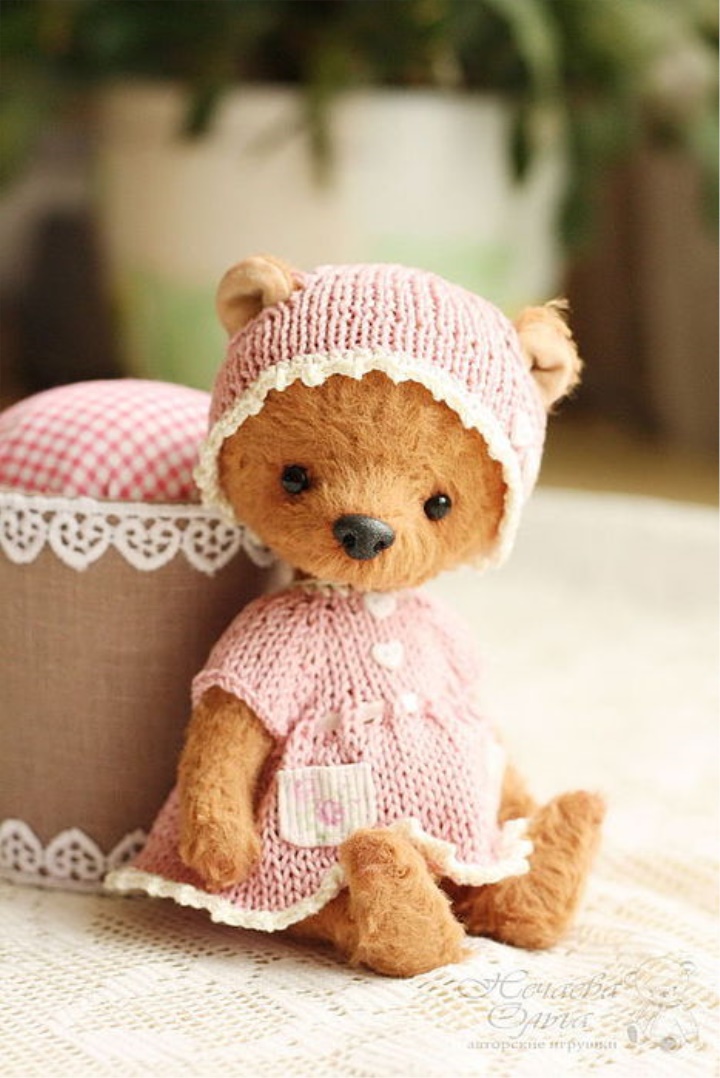
To begin with, what we need:
1. Teddy bear
2. spokes number 2
3. hook number 1.5
4. long needle with a big eye
5. cotton threads.
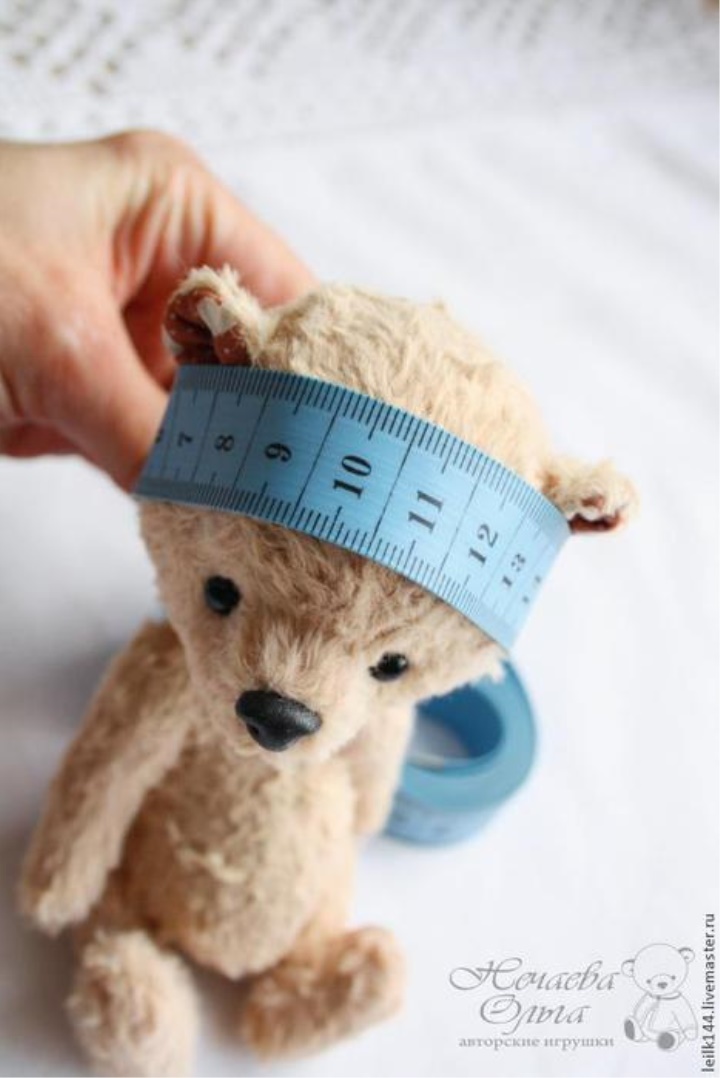
I got 19 cm.
I calculated, after knitting my sample, that in one centimeter I have about 2.9 loops.
That means 19X2.9 = 55
Great.
I dial 55 loops.
We make several rows from the forehead to the ears. I got eight rows.
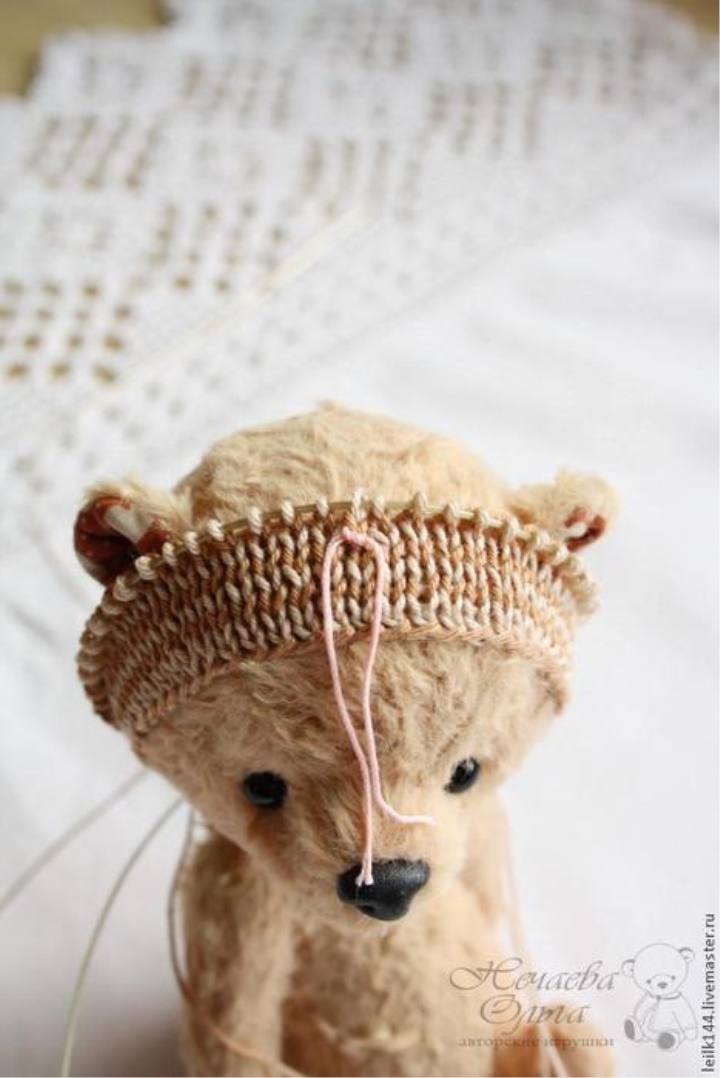
We divide the loops in half. I got 27.5. Mark the center with a thread (I have a 28 loop).
It can be noted with a pin.
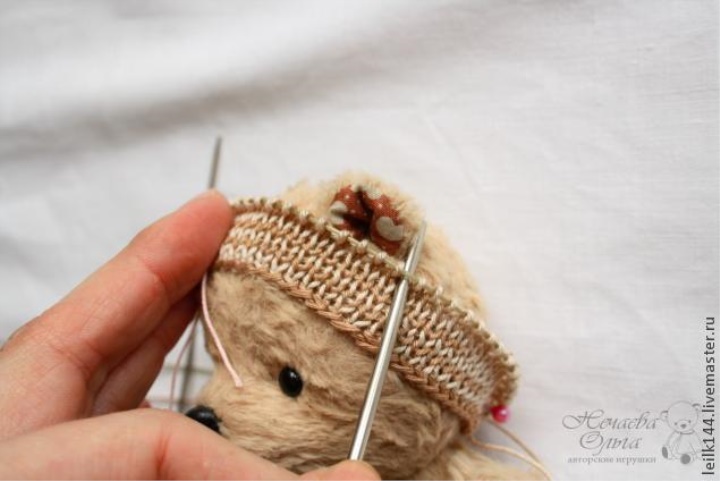
We fix our workpiece with pins on the head.
From the center on both sides you should have the same number of loops.
I got seven loops on each side.
I usually use the reverse end of the hook to determine where to make the hole for the ear.

I managed to close five loops.
I'm recording everything.
We now turn to loosening holes.
I write what happened to me.
I send 15 loops, close 5, I bind 15, close 5, I sew 15 loops.
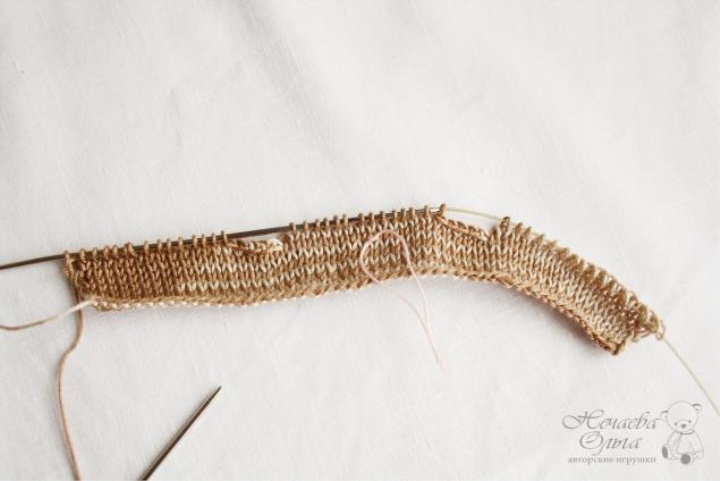
In the purl series in the places where we have closed the hinges I add (I throw) five loops each.
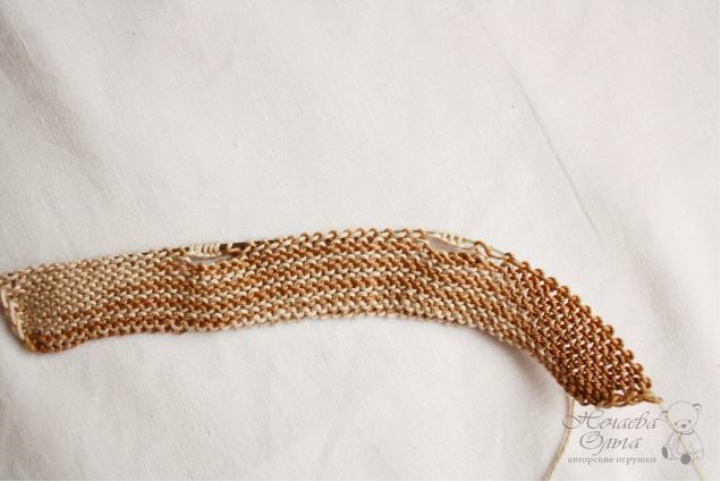
In the front row I sew the capes with facial.
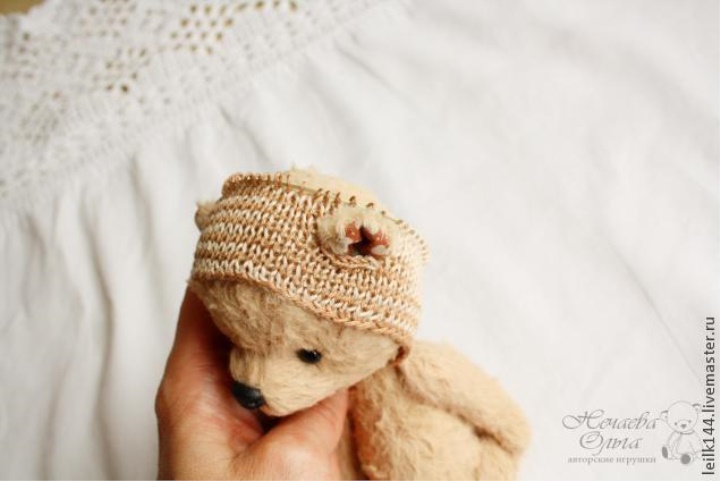
Further we knit directly, sometimes trying on.
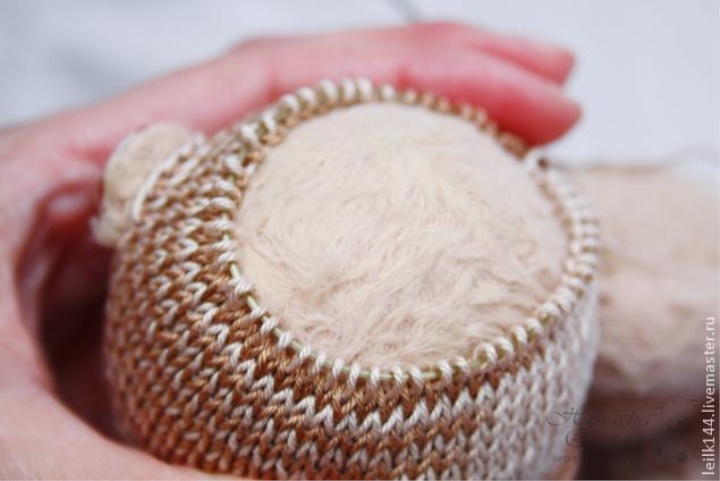
When there is a small hole in the front row, we tie two consecutive rows together.
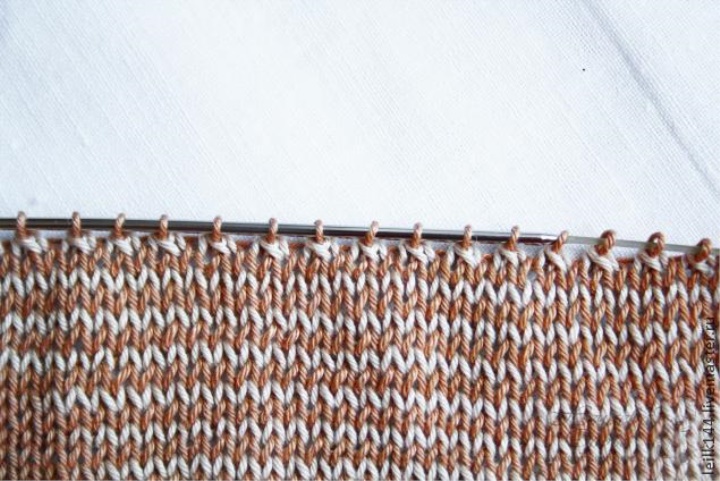
We cut our thread, leaving a long tail. We put it in a long needle. We remove loops on the needle and tighten.
Sew on the seam. Crochet the edge.
We measure the hat and enjoy the result of our labors.

Have decorated a hat. It remains to tie another blouse and sew panties for the baby.